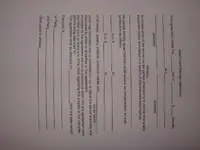OK. Finally got thru all the posts.
My recommendation: start with the obvious. Caches are often in plain site within quick recovery of the front door of the home.
Check any old autos is a good idea for this site. Check the auto shop site. I know you don't have access to it, but that's one of the most likely areas: where someone would be working every day and checking through bolt cans or containers wouldn't be out-of-the-ordinary.
Some suggestions: my grandfather used to keep V nickels in the bottom of a coffee can which had 2-3 inches of bolts and nuts on top of it in his tool shed. My mother knew nothing about it. Grandpa took my brothers to show me, and we had fun trying to scratch the nickels with nails, knifes, and hammers. Odd what you remember ...
Another great-uncle, after dying, left an estate including $760,000 in banks alone! A constant collector, he had a gallon jar of Indian Head cents on his kitchen table when he died. He had a drawer with $1,000 face value silver coins in it, and another drawer with gems: diamonds, rubies, opals, etc. He owner a 47-carat men's diamond ring: half finished and faceted, half natural. Odd thing: the ring disappeared before the estate could be probated. He offered me a job running a wheat ranch he owned in Canada the day I graduated from high school. I thought it kind of odd at the time. His tractors had compasses as you couldn't see the end of the field. Ranch had something like 40,000 acres in it.
Here's a thought: start at the front door or front window, and search the first 20 feet away, picking up everything metal, including iron. If man may have been well-off, cache area would of necessity been larger than if just a poor farmer hiding a few coins for a rainy day. Check flower beds (already suggested) and old trees or stumps CAREFULLY.
A few years ago started exchanging letters with a cache hunter East of me. His last letter included out-of-focus photos of a cache he had found. He had got a lead from an old-folks home about an early coin collector who was thought to have buried his collection. Hunter knew where the property was. Home long gone, site overgrown, many old tree stumps. He spent the first hour on the site sitting on one tree stump, trying to envision where the house was, where the outbuildings were, where the old road used to run. He then turned on his detector, walked over to the largest stump nearby, and started a search pattern. Within 10 minutes, he had a big signal, and spent the next 2 hours digging out what proved to be a miner's lunch box. Inside, wrapped in oilskin, was the coin cache. It contained a complete set of Trade Dollars, including the rare proof issues; a complete set of $5 and $10 gold coins from the 1810-1830 period. It had 10 Continental Dollars in 6 different metal contents; 5 1793 half cents, and 5 1793 cents.
These things DO happen. You must try to put yourself in the position of someone hiding valuables on the site: where would YOU hide something that the neighbors wouldn't think as being out of place?








